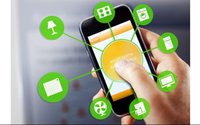 While many
devices within the Internet of Things come with a lot of capabilities built in, many consumers aren’t yet using them all. Others aren’t even aware of what other capabilities their smart
devices have.
While many
devices within the Internet of Things come with a lot of capabilities built in, many consumers aren’t yet using them all. Others aren’t even aware of what other capabilities their smart
devices have.
For various reasons, half of consumers are not tapping into features or capabilities of connected devices they own.
Fewer than a third (31%) of households are taking full
advantage of all of the capabilities of their digital assets, according to a new report by International Data Corporation for Telus International.
Part of the reason that connected devices are
not being fully utilized is that not everyone knows the extent of what the devices do. Some don’t know everything their devices can do and others have a feeling there is more there but
aren’t aware of how to do it. Here’s the breakdown:
- 31% -- My household takes full advantage of all of the capabilities of our digital assets
- 32% -- My household
uses most of the capabilities of our digital assets, but we could be using more
- 16% -- Our digital assets have capabilities that I know we could use, but I don’t know how to set them
up
- 10% -- Our digital assets have capabilities that I know we could use, but I am concerned that they won’t work reliably or that they will be too much of a hassle
- 24% -- I
think our digital assets have capabilities that we could use, but I am not sure what they are
In-home tech challenges have moved way past adjusting the blinking digital clock on the
front of a VCR (video cassette recorder).
Consumers are faced with connecting their smart TV to their home network after they set up their home network, downloading apps to monitor and control
a new smart device, syncing devices to their phones with Bluetooth, setting up remote-controlled thermostats and remotely monitoring various things through their smartphone.
The top three
interests consumers have around home automation and control are using networked sensors to monitor for fire, smoke or water, to see and record who comes to the front door using a video camera and
using networked sensors to monitor doors and windows.
At the bottom of the list of what interests consumers are networked kitchen appliances, demand-response control for energy consumption and
voice-control of lights, music, appliances and home environment, according to IDC.
Smart devices keep coming, with more and more features included.
Next up will be marketing to educate
consumers about what these gadgets can do and then helping consumers figure out how to use them more easily.